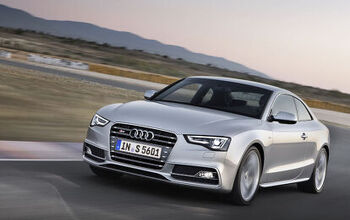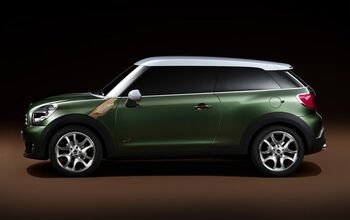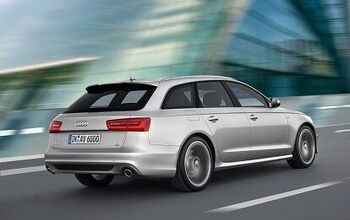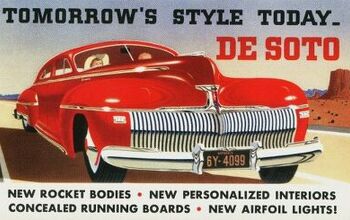What's Wrong With This Picture: Alfa's Comeback Strategy Edition
Alfa’s four-year product plan has leaked to autoblog.it, and though it takes a little deciphering it confirms what we’d been hearing: that key Alfa products will be “Imported from Detroit” (to borrow a phrase). Here’s what we’ve been able to piece together: the 2012 models are the 4C “supercar” (note Alfa’s use of scare quotes around the term) and the Compact-Wide “C-SUV,” which will be built alongside the next-gen Jeep Compass and Patriot in Italy. Then, in 2013 the midsized Giulia sedan and sportwagon will debut, underpinned by the developed-in-Detroit next-gen 200/Avenger platform. That same year, the MiTo will gain five-door and convertible versions as well, with a more-mysterious D-SUV that will likely be closely related to the next-gen Jeep Liberty. Finally, in 2014 Alfa will update its C-segment Guilietta, at which point it should be ready for global (i.e. US-market) duty.
Which brings up an important point: this is Alfa’s European product plan, and US-market efforts could take a bit more time. And even for Europe this plan could be ambitious: Fiat CEO Sergio Marchionne has already reportedly rejected initial design s for the all-important Giulia midsizer, and seems to be waffling on whether it will be built in the US or Italy. In any case, the lineup seems set: a carbon-fiber Cayman competitor, a Tiguan/Q5 fighter (related to the next Compass/Patriot), followed by a midsized sedan/sportwagon (on the 200/Avenger platform), and a version of the next-gen Liberty. Needless to say, step one of the plan sounds lovely… the rest seems like a challenge of differentiation more than anything else. Especially if all of the planned models come to the US, where they’ll have to fit between a (very) similarly-revamped “luxury” Chrysler brand and “sporty” Dodge brand.
More by Edward Niedermeyer
Latest Car Reviews
Read moreLatest Product Reviews
Read moreRecent Comments
- MaintenanceCosts Nobody here seems to acknowledge that there are multiple use cases for cars.Some people spend all their time driving all over the country and need every mile and minute of time savings. ICE cars are better for them right now.Some people only drive locally and fly when they travel. For them, there's probably a range number that works, and they don't really need more. For the uses for which we use our EV, that would be around 150 miles. The other thing about a low range requirement is it can make 120V charging viable. If you don't drive more than an average of about 40 miles/day, you can probably get enough electrons through a wall outlet. We spent over two years charging our Bolt only through 120V, while our house was getting rebuilt, and never had an issue.Those are extremes. There are all sorts of use cases in between, which probably represent the majority of drivers. For some users, what's needed is more range. But I think for most users, what's needed is better charging. Retrofit apartment garages like Tim's with 240V outlets at every spot. Install more L3 chargers in supermarket parking lots and alongside gas stations. Make chargers that work like Tesla Superchargers as ubiquitous as gas stations, and EV charging will not be an issue for most users.
- MaintenanceCosts I don't have an opinion on whether any one plant unionizing is the right answer, but the employees sure need to have the right to organize. Unions or the credible threat of unionization are the only thing, history has proven, that can keep employers honest. Without it, we've seen over and over, the employers have complete power over the workers and feel free to exploit the workers however they see fit. (And don't tell me "oh, the workers can just leave" - in an oligopolistic industry, working conditions quickly converge, and there's not another employer right around the corner.)
- Kjhkjlhkjhkljh kljhjkhjklhkjh [h3]Wake me up when it is a 1989 635Csi with a M88/3[/h3]
- BrandX "I can charge using the 240V outlets, sure, but it’s slow."No it's not. That's what all home chargers use - 240V.
- Jalop1991 does the odometer represent itself in an analog fashion? Will the numbers roll slowly and stop wherever, or do they just blink to the next number like any old boring modern car?






























Comments
Join the conversation
This plan would make more sense if Alfa was intended to replace the Chrysler brand in the US. Why three car brands? And why so much Alfa focus on SUVs? If the next-generation Liberty will still be on a "truck" platform, what justification is there for an Alfa variant? The group think in Fiat's management ranks must be exceptionally strong. Otherwise this plan would have long since been laughed out of the room. Has media attention gotten to Sergio's head? Or was he never quite as good as Fiat's press releases would suggest?
The reason there will be Chrysler, Dodge, and Alfa is b/c they decided not to "merge" the Alfa and Dodge brands as they are too different in personality (duh). Basically, most Dodge/Fiat products will be the same (Dodge Journey/Fiat Freemont) except for the boutique nameplates (Fiat will be a boutique brand in the US with 500 and Dodge will be a boutique brand outside US with the new Viper). All common vehicles will be basically the same. Chrysler/Lancia will also be the same brand, but of course entry-level luxury. Only Jeep and Alfa will truely be unique global brands. Whether any of the future products will be good is beyond me, but one can only hope.